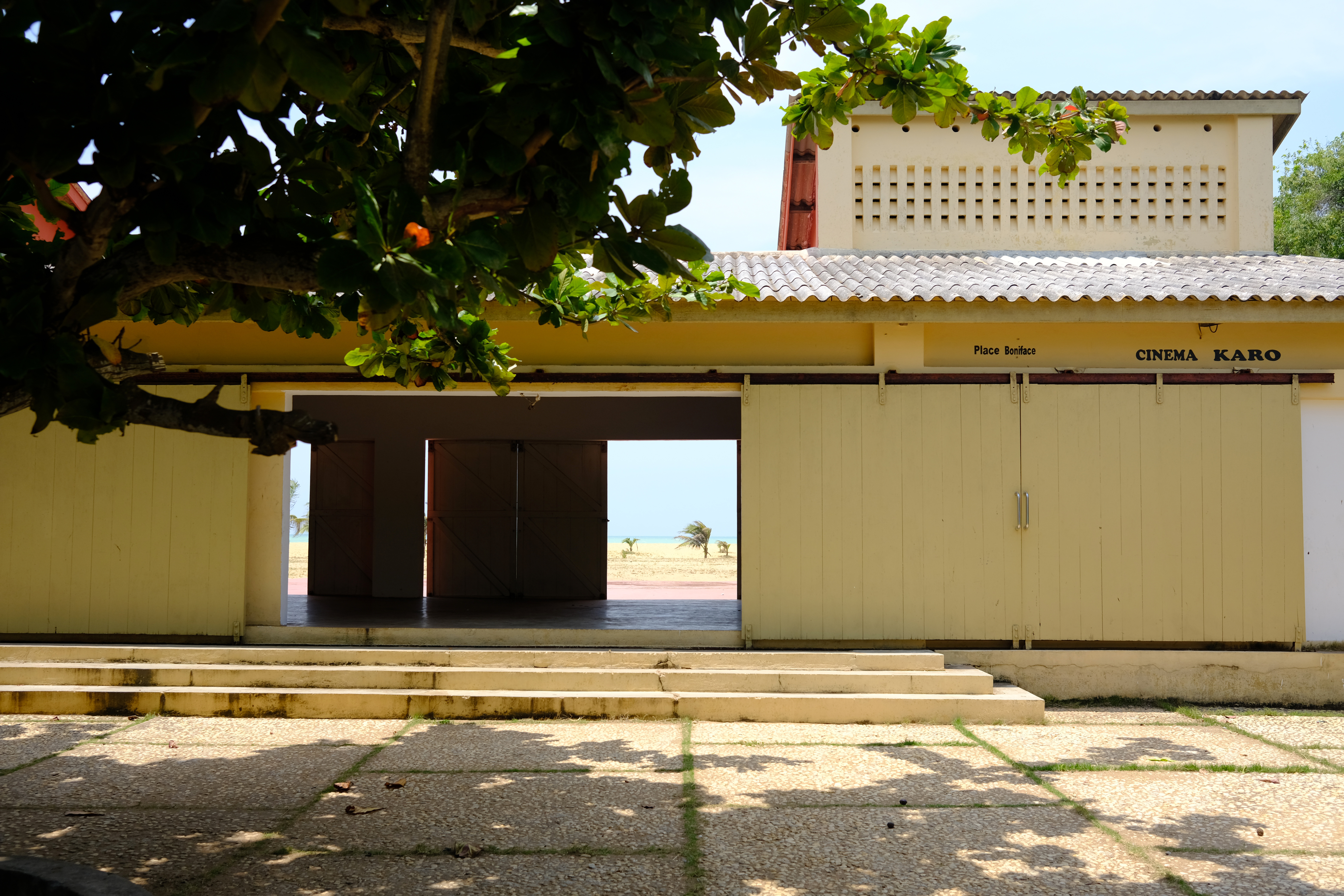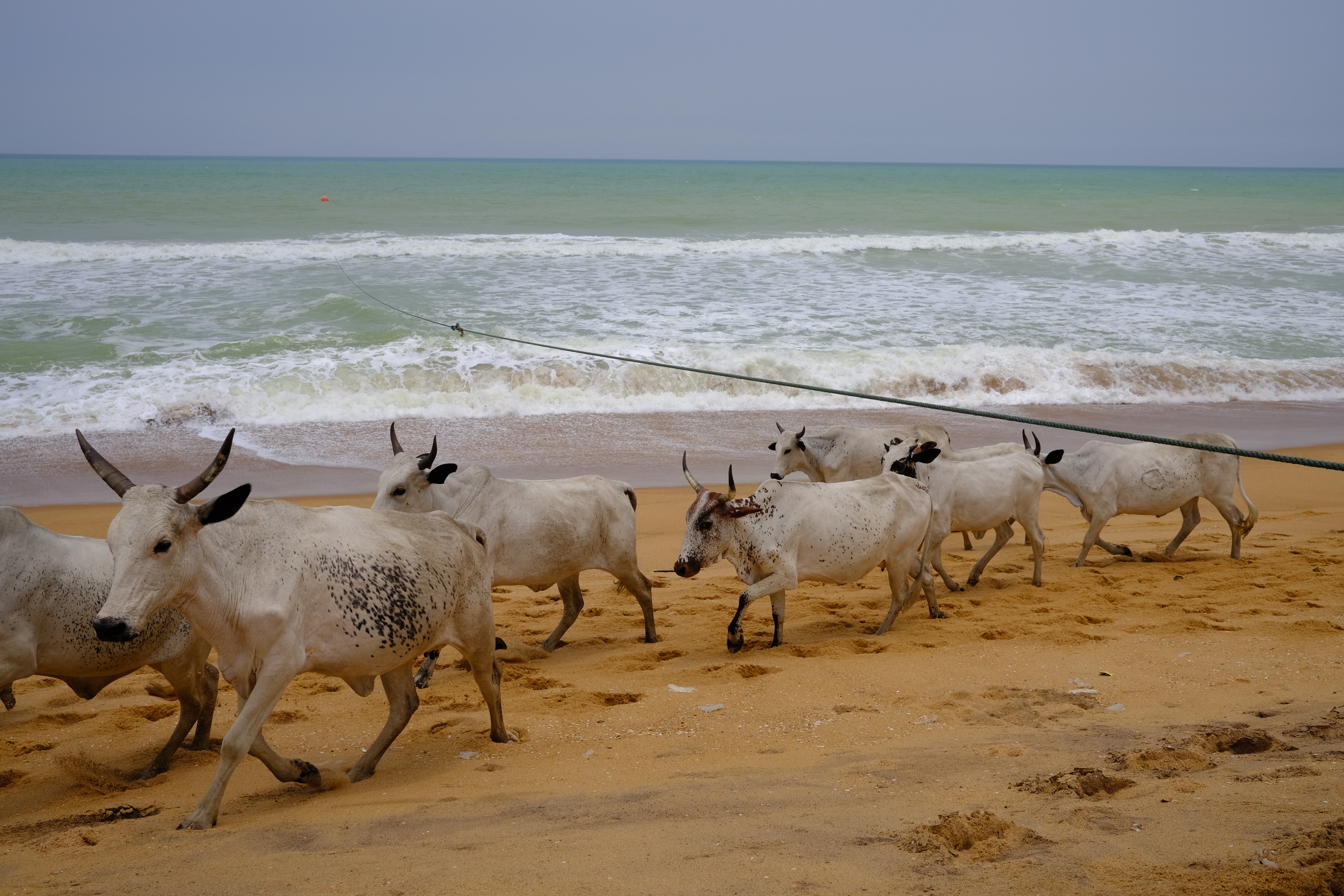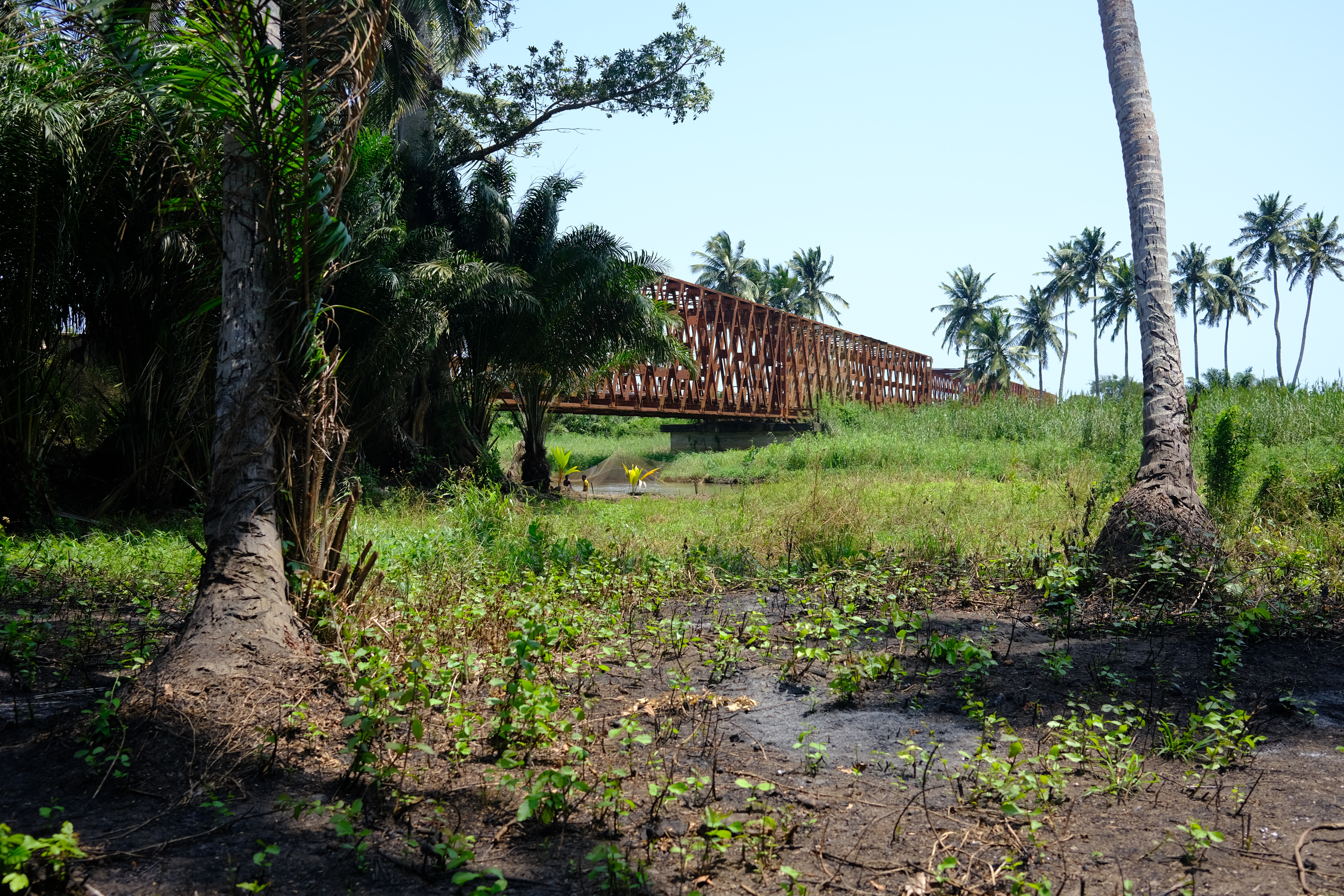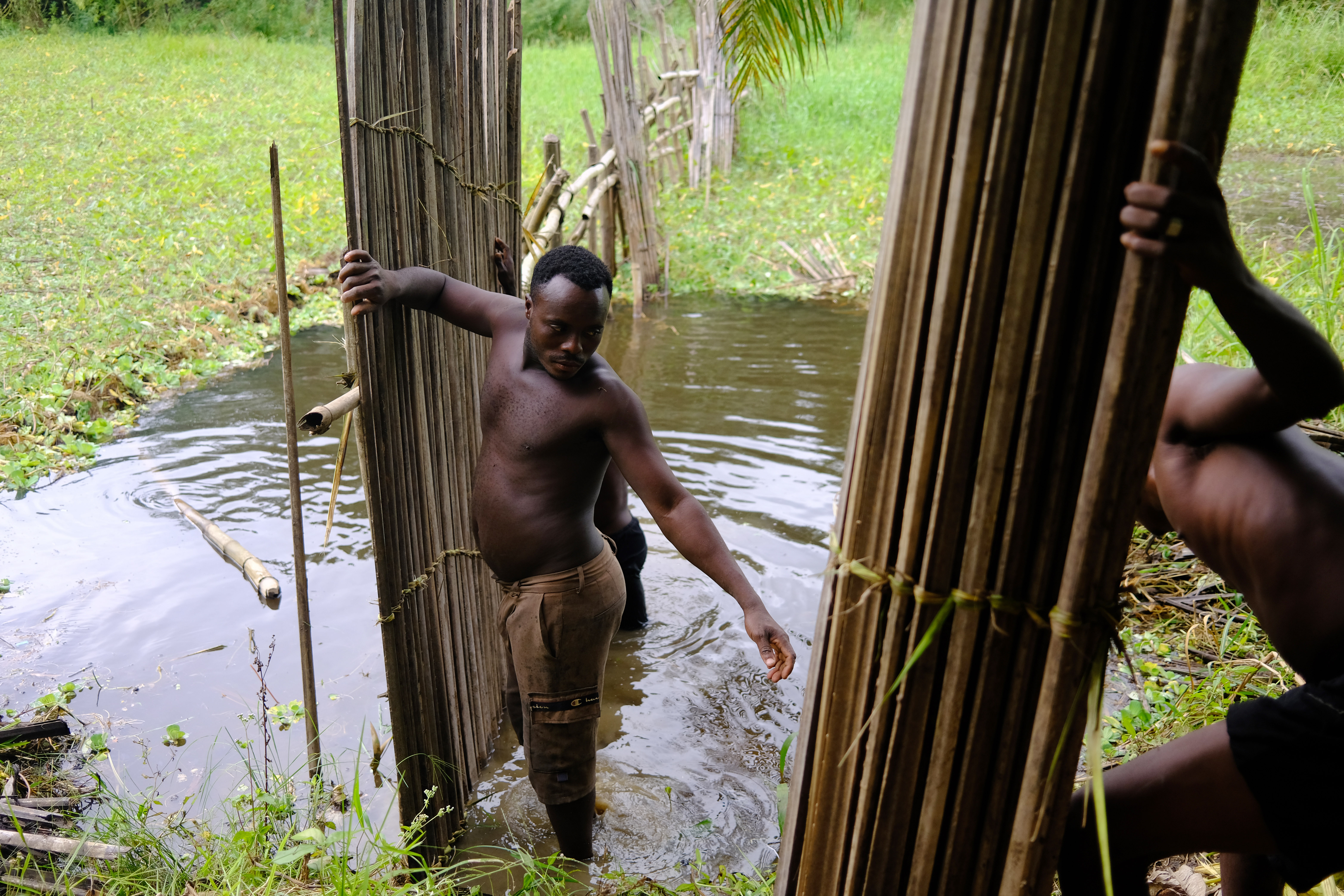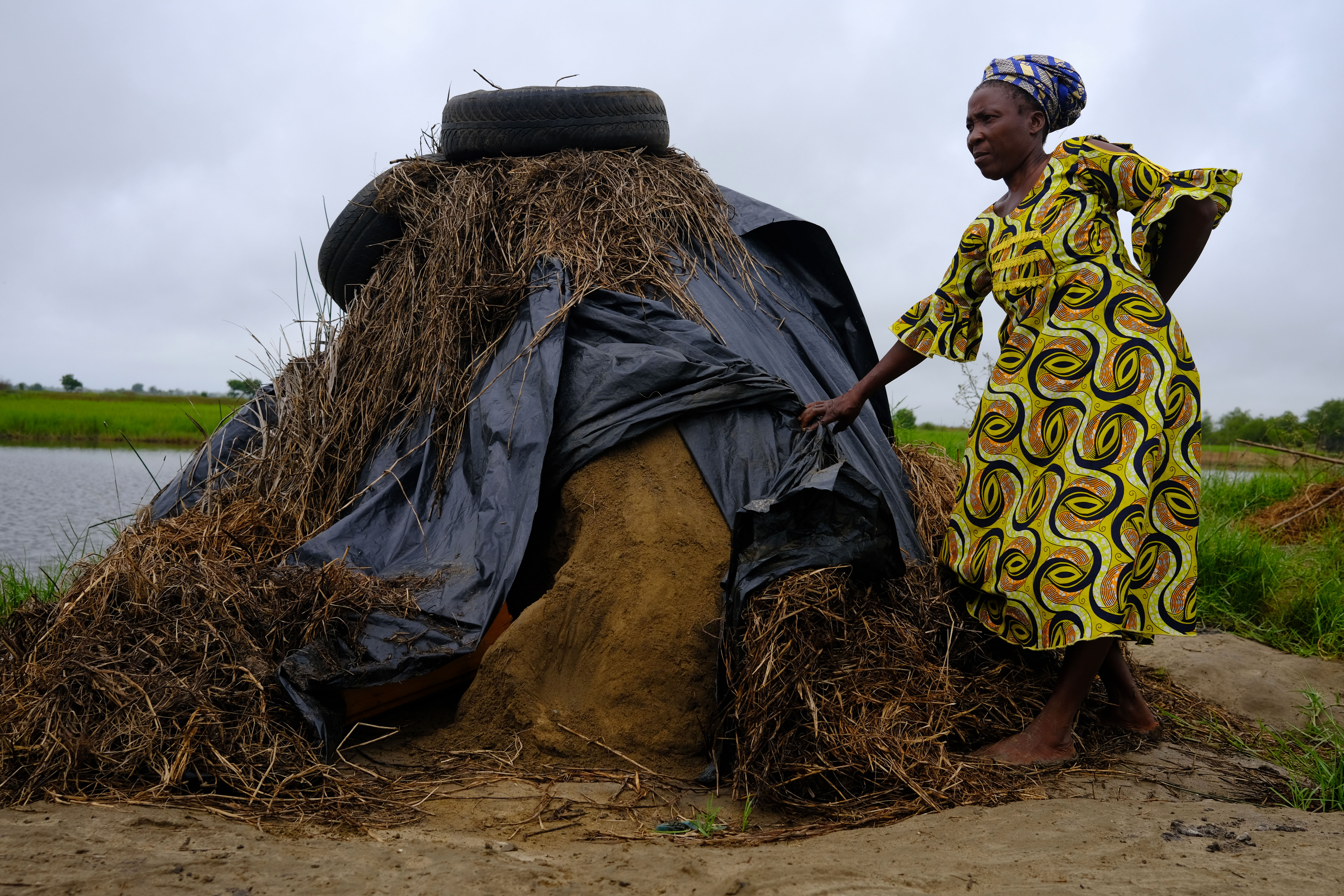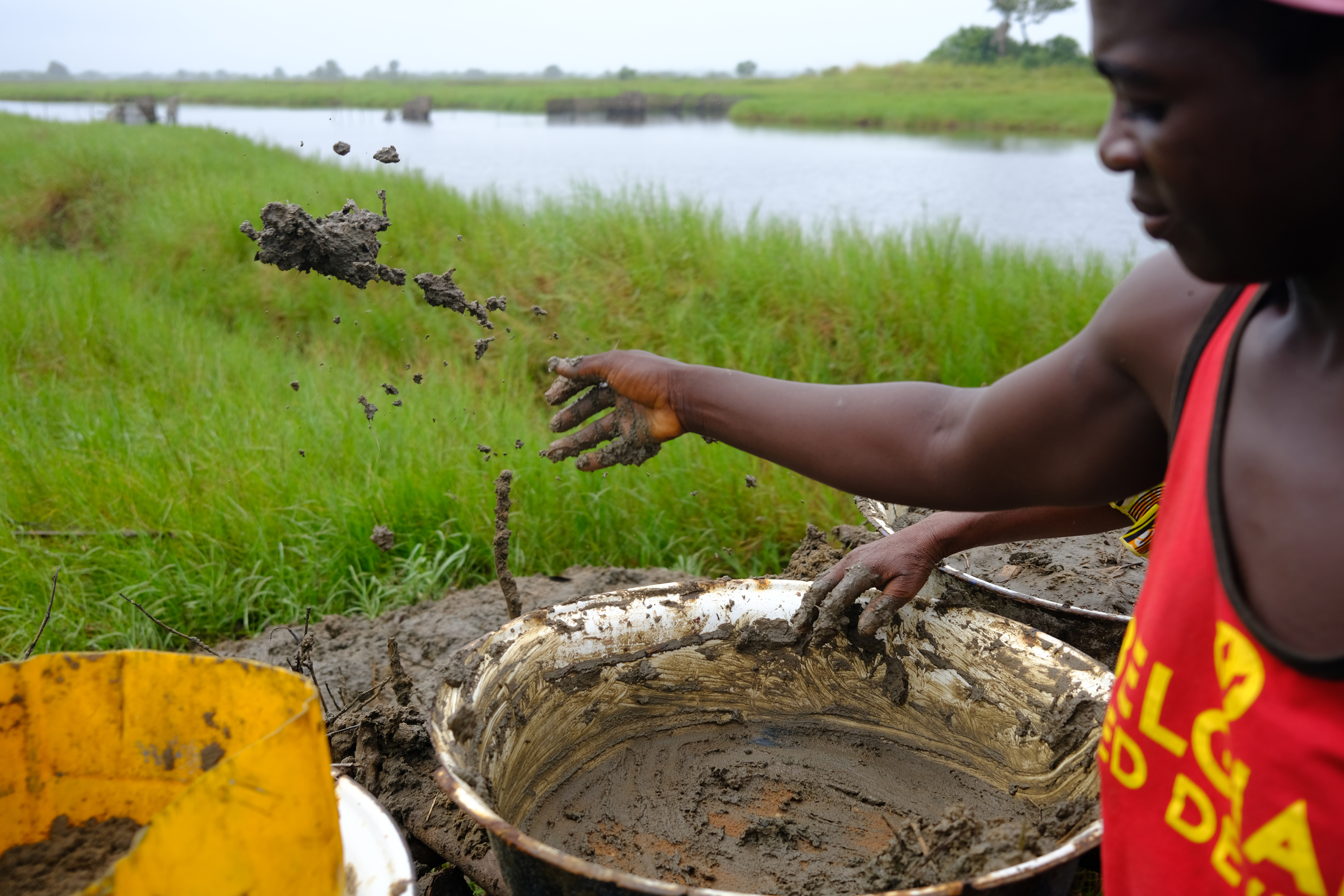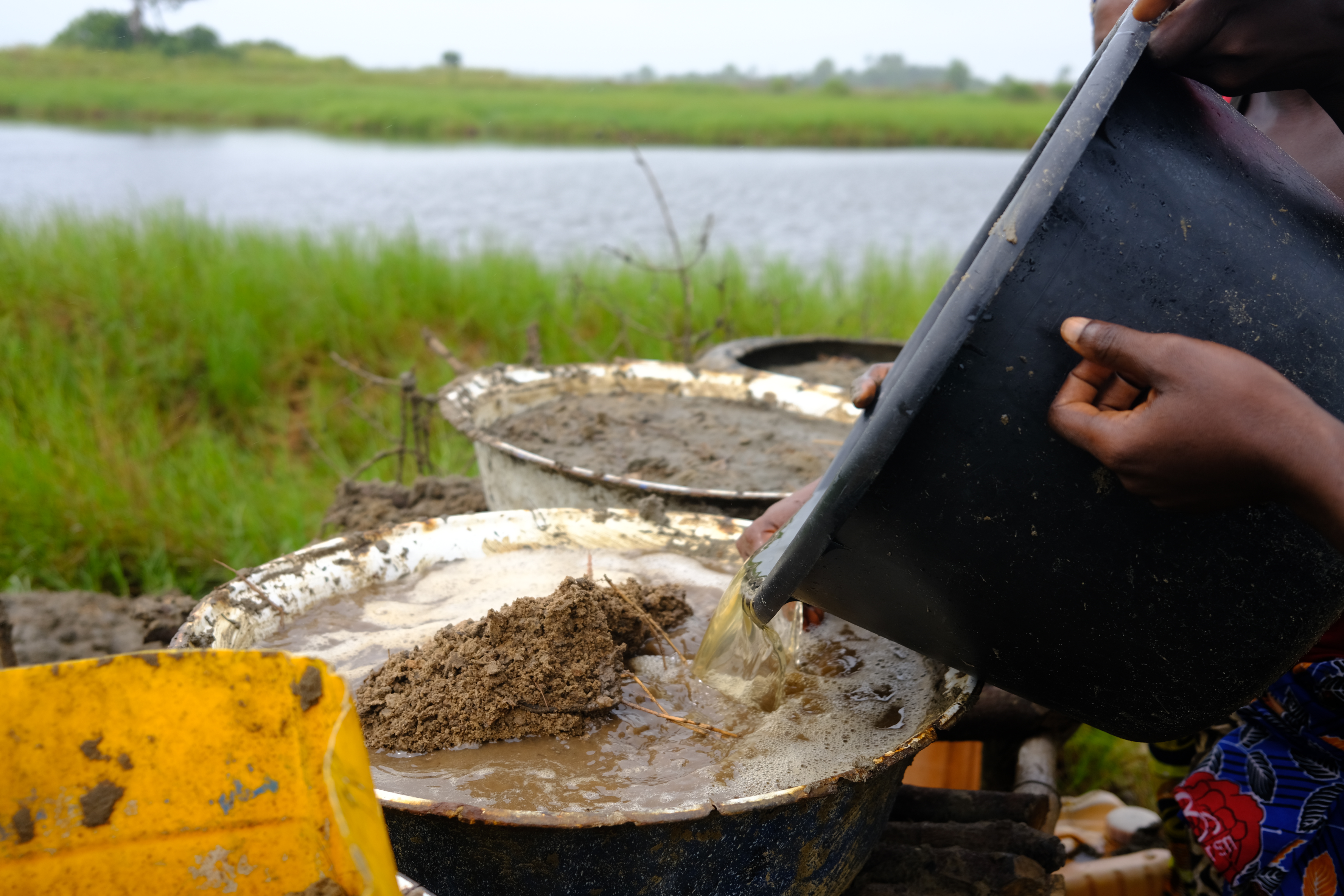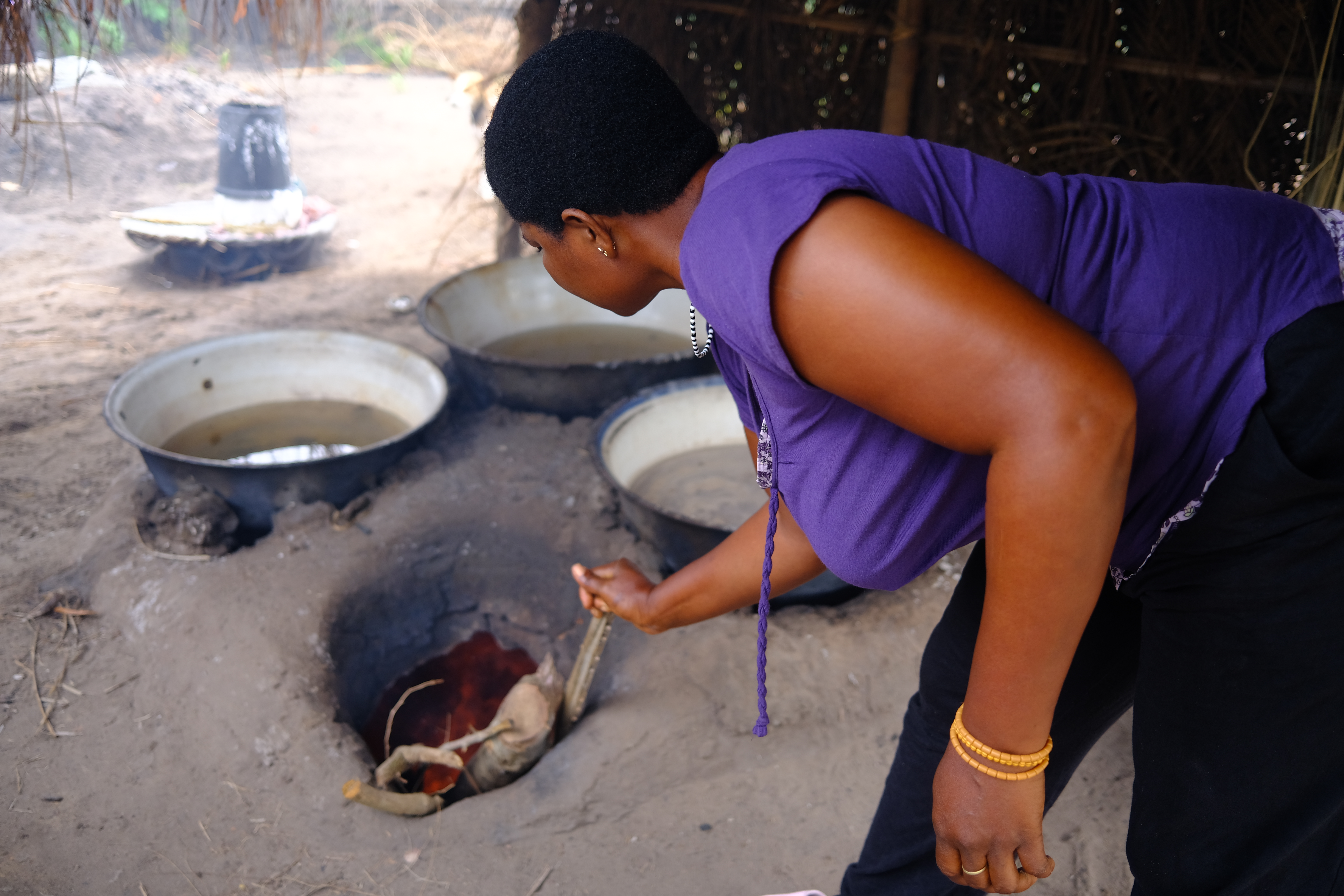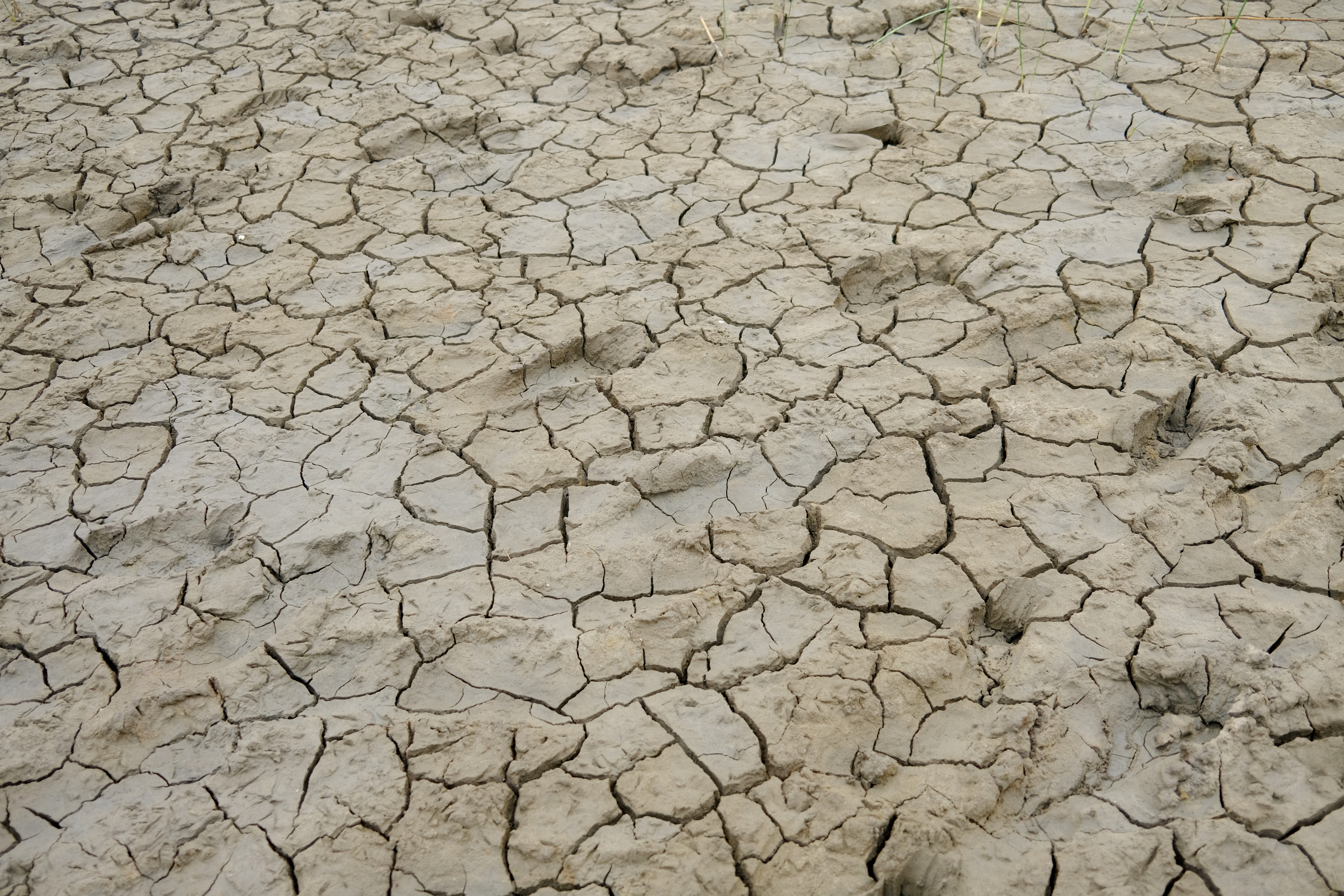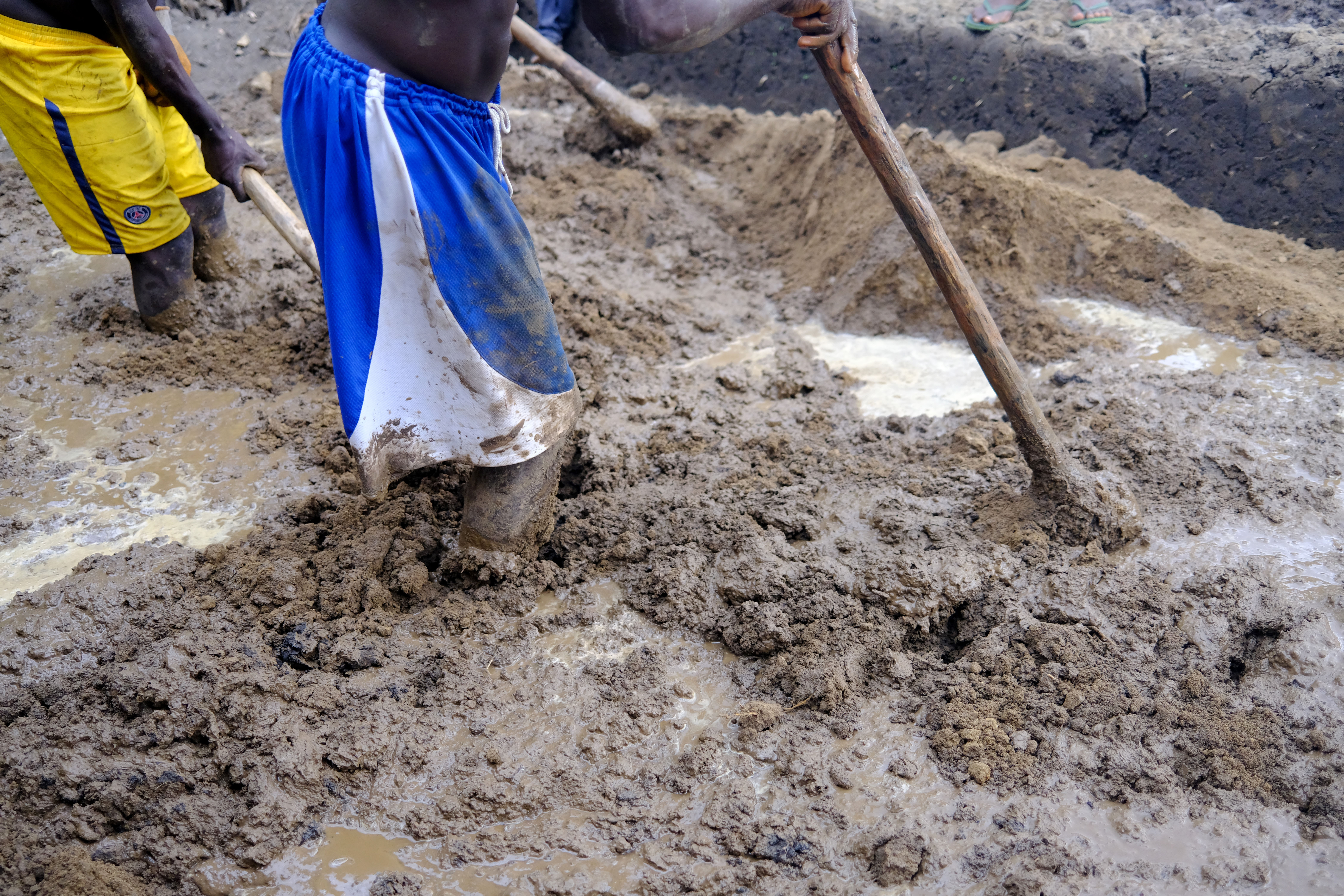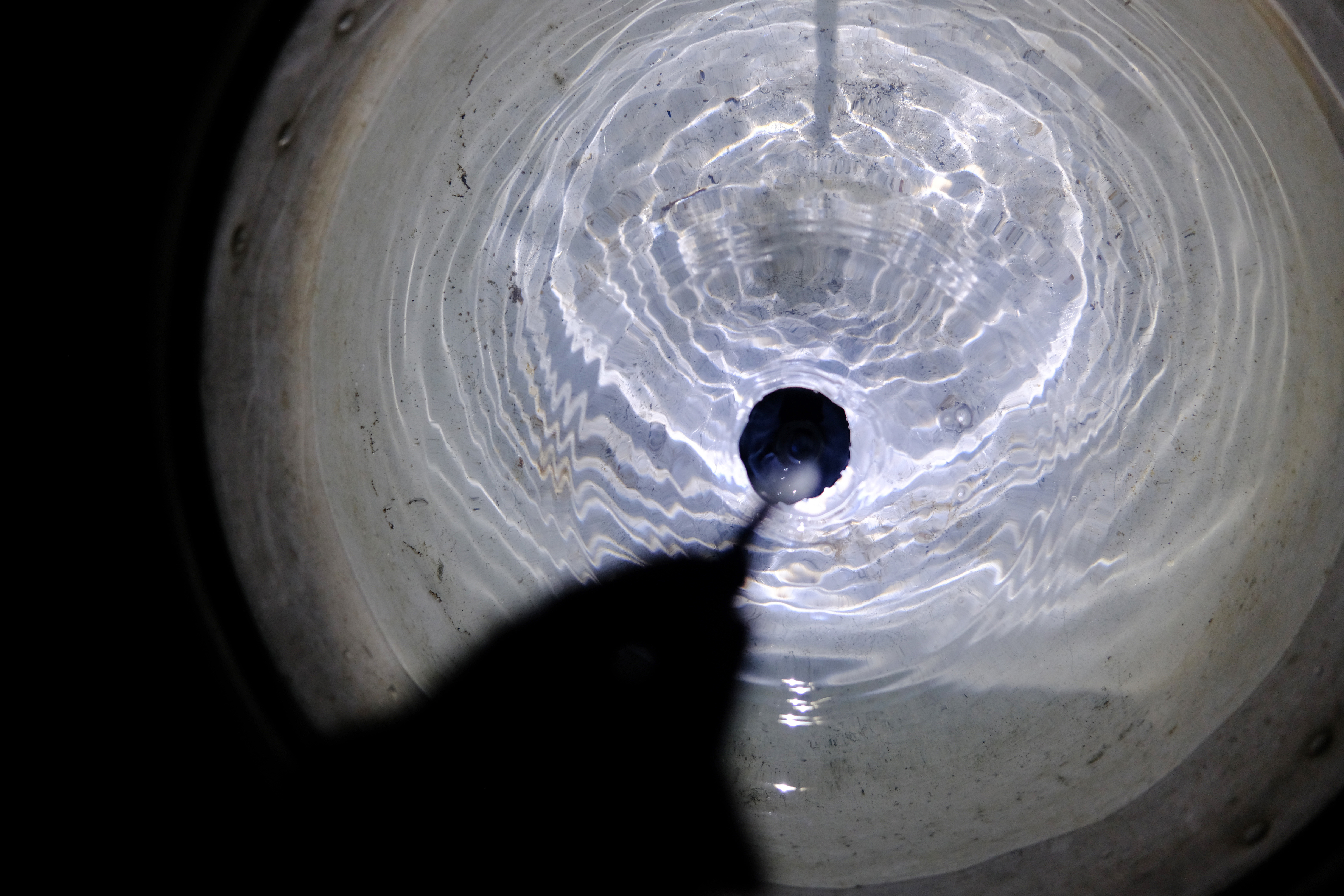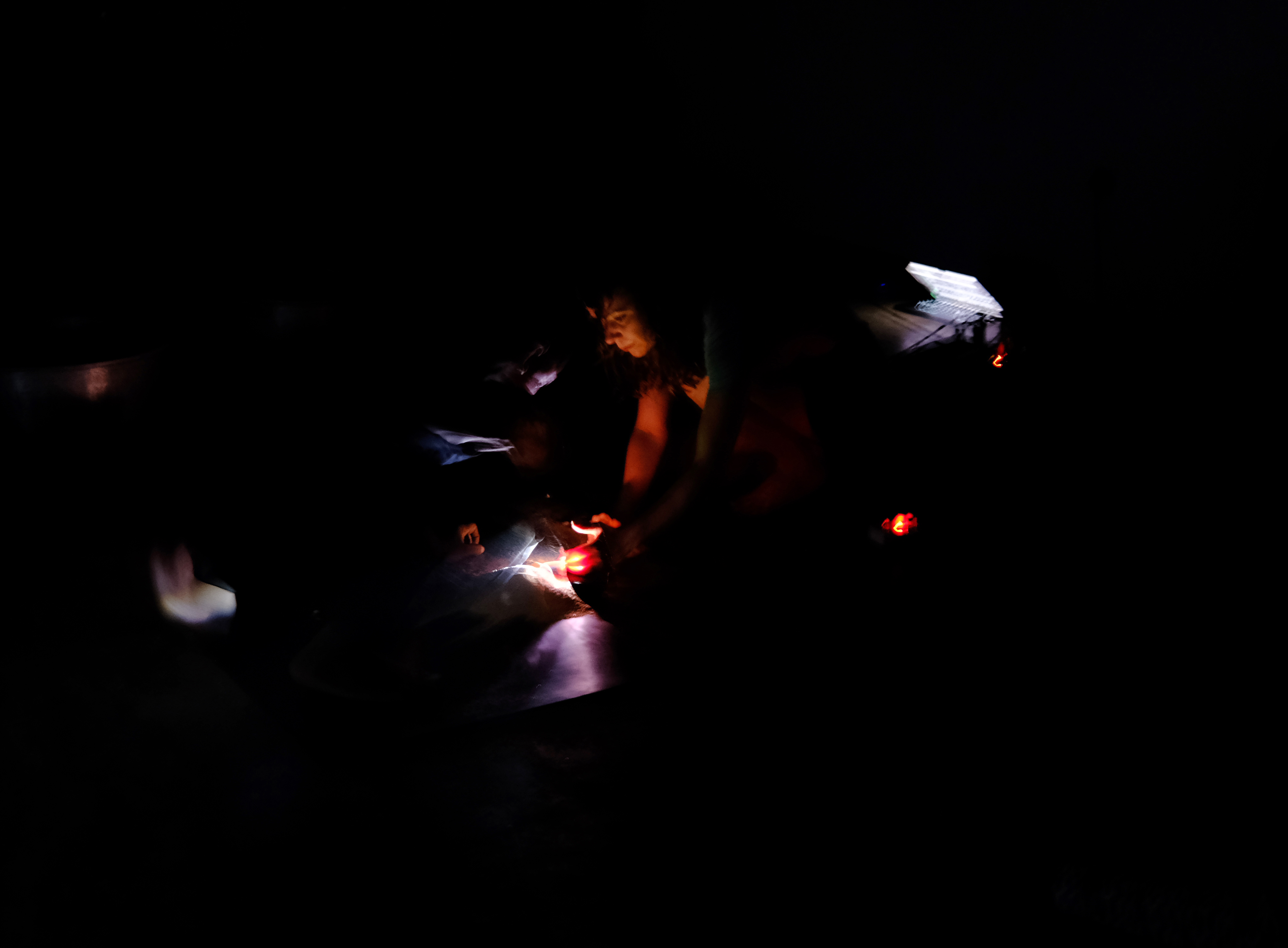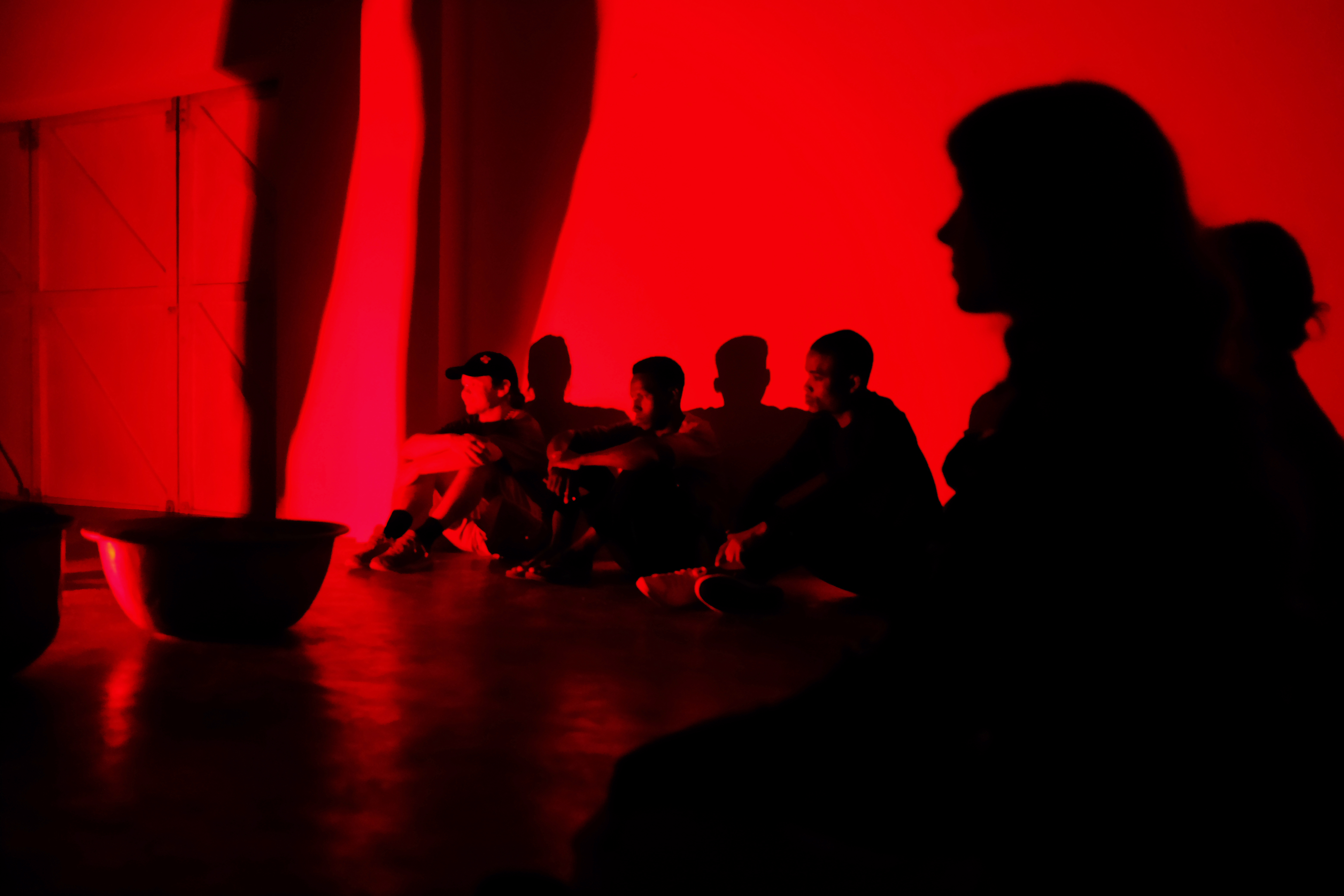(
)
Lissa Gbassa Variations is a soundscape composed of delicately layered field recordings which Nichols gathered in the communes of Grand Popo, Bénin and Aneho, Togo. The piece was produced as the base track for a collaboration with dancer Orphée Georgah, in the Lissa Gbassa project space at Villa Karo. It was also crafted to be engaged with as a soundscape in and of itself, with pauses woven in to allow the live environment in which it is listened to into its resonant field
x
+
Working as artist in residence at Villa Karo in Grand Popo, with its open studio spaces that give directly onto the ocean, Nichols felt an invitation to connect with the tranquility and the wildness of this natural environment with all her senses. Flowing with this invitation, she began to expand her research beyond the studio, engaging with traditional practices which are intrinsically linked to the Atlantic, the Mono river and the land. Interested in the tactile knowledge embedded in processes such as salt distillation, fishing and earthen construction, she took her recording equipment out into the field to listen to how water, earth, wind and fire vibrate and resonate inside these processes beyond what can be heard with the human ear.
This project became a form of ‘environmental tuning’. Using a contact microphone, hydrophone and geophone, Nichols was able to listen to material vibrations and allow them to speak on their own terms. Pauline Oliveros’ ideas around Deep Listening and Quantum Listening became important reference points for this work, as she moved towards an exploration of listening as a conscious practice.
Taking her listening practice into her collaboration with dancer Orphée Georgah, Nichols wanted to explore what it means to listen with the whole body. During their collaboration, Georgah shared insights and exercises via his experience with Butoh, contemporary and traditional Beninese dance, and Nichols shared her sonic and sculptural practice and her awareness work as an Alexander Technique teacher. Through their exchange they developed embodied tools to listen and improvise between sound and movement. They discovered the potential to connect via the breath, slow movement and by activating different forms of conscious awareness, from sensory isolation and amplification to exploring expanded visual, textural and auditory awareness.
In their live performance in Lissa Gbassa they created micro movements with live mic’d sound using materials which emerged from the production of the track itself. Flowing from the depths and rhythms of the track’s low-howling salt water bubbles or crisp bamboo forest echoes, inside the live performance they drew sonic lines with sand, introduced rhythmic hydrophonic water droplets and listened into reverberating sea shells rebounding in the hollows of a ceramic vessel. The accompanying movements of their dynamic sonic improvisations were amplified, obscured and transformed via subtle beams and flickers of torchlight and shadow.
x

x
